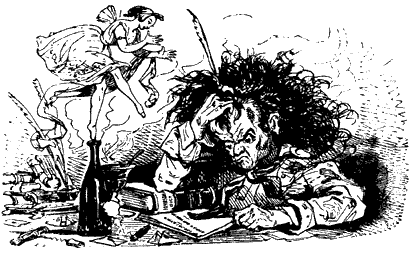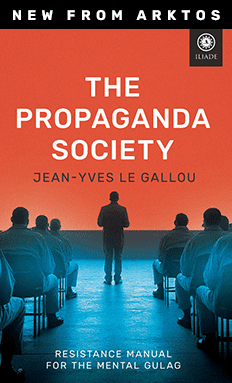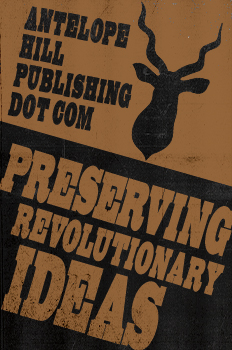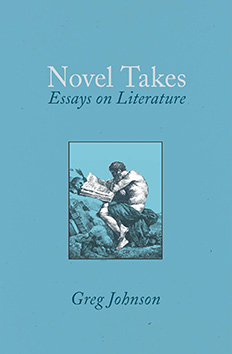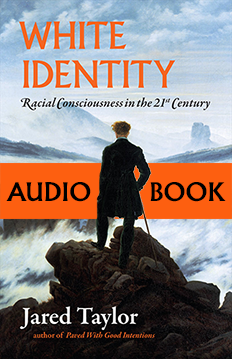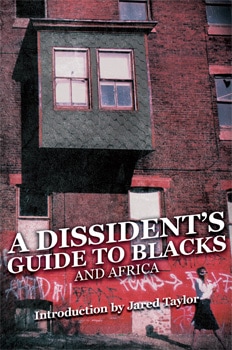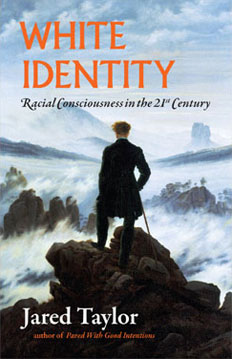July 1993
| American Renaissance magazine | |
|---|---|
| Vol 4, No. 7 | July 1993 |
| CONTENTS |
|---|
The “Reparations” Hoax, Part II
Integration . . . Disintegration
O Tempora, O Mores!
Letters from Readers
| COVER STORY |
|---|
The ‘Reparations’ Hoax, Part II
The demand for reparations is based on a false understanding of American history.
The first part of this article described rising demands among blacks for government “reparations” for the enslavement of blacks. Activists argue that slavery was a uniquely evil crime and that all of today’s Americans, whether descended from slave owners or not, benefit from the work of slaves who “built America.” On this basis, it is common to demand as much as $1 million for each black now living in America.
It is pure silliness to claim, as reparationists do, that the United States was made uniquely prosperous by the labors of blacks. Blacks contributed to the development of America in much the same way horses did, by laboring under the direction of whites. Moreover, it was those parts of the country where slaves were most common that have always been poorest and remain poor to this day.
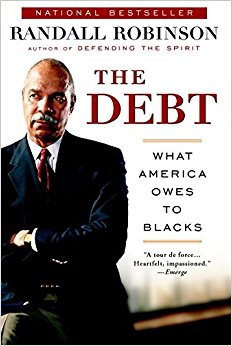
Eugene Genovese, a Marxist historian of slavery who certainly has little sympathy for slaveholders, writes that the slave system retarded the development of the South. He argues that since slaves could not be taught to handle livestock carefully, the South did not develop a cattle industry. Modern agricultural equipment could not be introduced on plantations because slaves were sure to break it. The only farm implements that survived were simple, crude, and heavy. The “nigger hoe,” for example, weighed three times as much as the more effective “English hoe,” which slaves habitually broke. Slave labor in factories was virtually out of the question because slaves could not be trusted with machinery.
The slave was said to be the laziest, most untrustworthy servant on earth and had constantly to be watched. A common reflection on his abilities was that “It takes two slaves to help one to do nothing.” Nor was it always possible to wring more work out of a slave by threat of punishment. “Every attempt to force a slave beyond the limit that he fixes himself,” wrote one owner, “. . . only tends to make him unprofitable, unmanageable, a vexation and a curse.”
Other than in the cotton fields, there is some doubt as to whether slavery was even profitable. Frederick Law Olmstead (1822-1903), the landscape architect who designed Central Park in New York City, made a study of slavery when he toured the antebellum South. He estimated that on many plantations slaves worked one third as much as a hired hand on a New England farm. He was convinced that free blacks could be hired for considerably less than the cost of keeping slaves.
Although some slaves were driven for long hours, northern anti-slavery tracts abounded with accounts of how the excessive leisure of slavery would be ended under strict, Northern employment practices. They promised that abolition would produce a decisive rise in the nation’s productivity.
Northern working men were well aware of these arguments. Slaves were provided for as children and maintained in sickness and in old age. Northern wage earners, who had no sick leave, children’s allowances, or retirement benefits, often wondered if they were not worse off than slaves.
A workingman’s newspaper, The Fall River Mechanic, lashed out at “men who stand and dole out pity for the southern slave but would crush with an iron hand the white laborer of the north.” Another paper, The Man, mocked the upper-class women who supported abolition:
Their tender hearts were sighing
As the negro’s wrongs were told
While the white slave was dying
Who gained their father’s gold.
Many Southerners firmly believed that they treated slaves better than Yankee capitalists treated workers. James Hammond, a Southern senator once rebuked his colleague from New York on the Senate floor with the following words: “Our slaves are hired for life and well compensated . . . Yours are hired by the day, not cared for, and scantily compensated.”
One indication of the value placed on the lives of slaves was a practice that Olmstead noted in his travels: Irish navvies were invariably hired to drain swamps and dig irrigation ditches. Malaria and intestinal disease made this some of the most dangerous work in the South. When Olmstead asked why the Irish were hired for it, he was told, “It’s dangerous work and a negro’s life is too valuable to be risked at it. If a negro dies it is a considerable loss you know.”
The black man’s value as a slave protected him in other ways. From 1840 to 1860, of the more than 300 people lynched by mobs in the South, fewer than ten percent were blacks. So long as the black man had tangible property value he was safer from lynch mobs than a white man.
As Olmstead noted, when the black man was definitely a slave, it seemed to break down the “natural” revulsion of whites for blacks, and lead to affection and intimacy of a kind that would have sickened Northerners. It was after Reconstruction, when free blacks were goaded on by carpetbaggers to mistreat and humiliate their former masters, that lower-class whites began to hate blacks and take pleasure in lynching them.
Reign of Terror
Today, as part of the reparations campaign, slavery must be described as a psychopathic reign of terror, the blackest blot on the record of the white man. There certainly were cases of barbarous mistreatment, but they were exceptions.
In The Mind of the South, W.J. Cash writes that the standard that “no one but a cur beat, starved, or overdrove his slaves became a living rule of daily conduct; a standard so binding as to generate contempt for whoever violated it.” Many owners took pride in the kindness they showed “their people,” and even among Northern abolitionists there was grudging acknowledgement of a certain noblesse oblige among the better element in the South. It is worth noting that even in that great abolitionist tract, Uncle Tom’s Cabin, the sadistic villain was not a Southern slave owner but a Yankee overseer.
Slaves were valuable property, which only one Southern household in five could afford. The rougher classes who might have been abusive masters were generally too poor to own slaves.
Although it is unfashionable to acknowledge it today, the bonds of master and slave were often affectionate. A contemporary ditty illustrates why some slaveholders resisted the idea of “colonizing” blacks by sending them back to Africa:
What! Colonize old coachman Dick!
My foster brother Nat!
My more than mother when I’m sick,
Come, Hal, no more of that!
That slaves were commonly addressed as “Auntie,” “Uncle,” or “Mammie,” showed the affection their masters felt for them. There certainly were acts of cruelty against slaves, but to dwell on them is to paint a false picture of the South. When Jefferson Davis took leave of the slaves on his Mississippi plantation to assume the Presidency of the Confederate government in Montgomery, he wept and his slaves wept. Of course, the “happy darkies” picture of slavery is not the whole story either. Wherever Union armies marched through the South, all but the house servants usually escaped to join them.
Reparations activists commonly maintain that the government “promised” freed slaves 40 acres and a mule, and that this gives today’s blacks a legal claim. It is true that Thaddeus Stevens, who wanted to punish the South, proposed legislation to seize all Southern land holdings worth $5,000 or more, break them up into 40 acre plots and give them to blacks. His intention was not so much to benefit blacks as to humiliate the Southern aristocracy, which he hated, and his bill never became law.
Reparations agitators also ignore the fact that some slaveholders were black. In 1830, more than 3,600 free blacks owned slaves, and a few were prosperous enough to own as many as a hundred. How would a reparations program treat the descendants of blacks who owned slaves — or who were owned by blacks?
Although it is specifically slavery over which the white man is supposed to beat his breast, by some measures slaves fared better than free blacks. According to one contemporary study, the slave infant mortality rate was 153 per thousand. As late as 1915, the infant mortality rate among blacks in Massachusetts was 163 per thousand, while in Pennsylvania it was 185 and in New York, 192.
The Final Tally
The reparations argument is based in part on the view that even if there are no longer any slaves who can be paid for their forced labor, the country as a whole has benefited so much from slavery that it should pay for that benefit. In fact, the final tally on the presence in America of blacks, whether slave or free, is overwhelmingly negative.
Far from contributing to the nation’s progress, slavery was probably an obstacle to the South’s development. Moreover, as Abraham Lincoln once pointed out to a delegation of blacks, the presence of their race was the cause of the nation’s greatest frenzy of self destruction: “See our present condition — the country engaged in war! — our white men cutting one another’s throats . . . But for your race among us there could not be war, although many engaged on either side do not care for you one way or another.”
Ever since abolition, those parts of the country with large black populations have been afflicted with crime and poverty, which have only worsened in recent decades. It is through only the most heroic “celebration of diversity” that the presence of blacks in the United States can be seen as anything short of a calamity, and it is one for which whites continue to pay a high price.
Prisons, welfare, and crime prevention are disproportionately paid for by whites. Underclass blacks have made many of our cities so squalid and dangerous that whites rarely venture into them. School integration has so lowered the standards of public instruction that many whites now pay for two systems: public schools for blacks and private schools for their own children (see the following book review). As Southerners now sometimes observe, “If we had known then what we know now, we would have picked the cotton ourselves.” They feel they have already suffered more than enough for the sins of their ancestors.
Slavery was practiced by a fraction of the people in just one section of the country. Only a tiny minority of the current white population counts slaveholders among its ancestors. Slavery came to an end nearly 130 years ago and it is because of slavery that today’s black Americans enjoy a higher standard of living than blacks anywhere on earth. The call for “reparations” is therefore just one more attempt to blame whites for the failures of blacks and to use this as a pretext for more race-based spoils.
| BOOK REVIEW |
|---|
Integration . . . Disintegration
A scrupulously researched account of how the public schools were wrecked in the name of racial equality.
The Burden of Brown, Raymond Wolters, University of Tennessee Press, 1984 (paperback edition 1992), 346 pp., $14.95
reviewed by Thomas Jackson
The most unjustifiable excesses of “civil rights” — affirmative action, busing, racially gerrymandered voting districts — have invariably been the work of the U.S. Supreme Court. Nine unelected justices have repeatedly endorsed ruinous policies that flouted the Constitution, the Congress, and the will of the American people. In The Burden of Brown, Professor Raymond Wolters of the University of Delaware chronicles the formulation of one of those ruinous policies: the mandatory racial mixing that destroyed the American public school system.
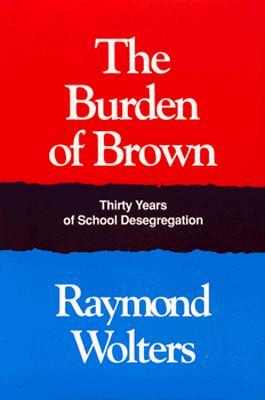
The United States has a written Constitution that is supposed to be the basis for all laws. There is a procedure for amending it. However, in Professor Wolters’ view, Supreme Court justices have essentially appointed themselves as a standing constitutional convention. On matters of race and education, they have ignored the framers’ intent and simply draped their own liberal values in constitutional language.
The mischief began in 1954 with the Court’s famous decision in Brown v. Topeka Board of Education, which Professor Wolters calls one of the most important events in recent American history. As is well known, this ruling repudiated the 1896 decision of Plessy v. Ferguson, which established that the races could be separated if they were treated equally.
The Supreme Court ruled that separate schools were inherently unequal, but this is not necessarily so. In fact, the NAACP had successfully sued many districts and forced them to give black schools equal facilities. Professor Wolters notes that in many segregated districts, black schools were better appointed and black teachers were better paid than their white counterparts. Whites were willing to pay higher school taxes in order to maintain separate instruction.
The Court’s assumption about the inequality of separateness was based largely on the work of Kenneth Clark, a black sociologist. In a famous experiment, Dr. Clark had shown black children a white doll and a black doll, and asked them to pick the one they liked. Most picked the white doll, and Dr. Clark argued that segregated schools made blacks feel inferior.
What Dr. Clark did not publicize was the fact that when black children attending integrated schools in Massachusetts were given the same test, they chose the white doll more often than did southern blacks attending segregated schools! The Supreme Court was persuaded by Dr. Clark’s data and searched the Constitution for a way to order school integration. They found it in the 14th amendment, which requires that states give all citizens equal protection under the law.
However, to read this amendment as forbidding segregated schools was an act of pure imagination. The same 1866 Congress that passed the amendment established racially segregated schools in the District of Columbia. Twenty-three of the 37 states then in the Union also had legally segregated schools and did not desegregate them after ratifying the amendment. Neither Congress nor the states saw any contradiction between equal protection and racial separation. The Brown decision forced upon the 14th amendment concepts alien to the men who had written and ratified it.
Massive Resistance
One of the great strengths of The Burden of Brown is that in explaining the machinations of the Court, Professor Wolters describes in fascinating detail what the ruling meant to real people in real schools. By the time Brown was decided, it was a consolidation of suits filed in five different districts. Professor Wolters recounts the depredations of 30 years of integration in each of them. It is startling to realize what has changed since the 1950s — and what has not.
One thing that has certainly changed is the extent to which whites are willing to mobilize to defend their own racial interests. One of the districts to which Brown immediately applied was Prince Edward County in Virginia, a state that briefly mounted what was called “massive resistance” to integration.
The governor, Lindsay Almond, insisted states have the right to resist unlawful federal tyranny. Under his guidance, the state legislature voted to withhold funds from any school that integrated and to issue tuition vouchers for students to use in private schools.
In 1958, when federal judges ordered integration, the state cut off funds and the schools closed. Many students found places in private schools, but others were left in the lurch. The next year, the Virginia supreme court ruled that the state constitution required the operation of public schools, and pronounced the closures illegal. Governor Almond, realizing that the only way to forestall integration was to defy the court and keep all schools closed, gave up and agreed to integrate.
However, as Professor Wolters points out, massive resistance collapsed only because whites broke ranks. Whites who lived in areas with few blacks were the first to capitulate. They assumed that a trickle of blacks would not ruin their schools, and they were not willing to hold out for the benefit of districts in which whites would be swamped. Also, it is important to remember that in the late 1950s, no one had heard of busing. Everyone thought that desegregation simply meant the removal of racial barriers so that blacks who wanted to cross them could. If the Virginians in their safe suburbs had known that blacks would one day be bused into their midst from the slums, they might have fought on against the federal government.
The whites of Prince Edward County, 65 miles southwest of Richmond, did fight on. There were more black than white students in the county, and whites had good reason to fear integration. Blacks were not only far behind whites in academic subjects, they were 14 times more likely to have venereal diseases and ten times more likely to have illegitimate children. Whites feared that racial mixing could lead to miscegenation.
The county therefore closed its public schools and reduced property taxes to offset the difference. With a tremendous outpouring of unity, whites built private schools — first in temporary quarters and then in sturdy, permanent buildings. Contractors donated materials, parents volunteered time, and a private, all-white school system known as Prince Edward Academy was born.
Whites offered to set up similar schools for blacks, where students could spend their vouchers just as whites did. On the advice of the NAACP, the blacks refused. It made much better copy for liberal newspapers if blacks were left with no schools at all; idle children made whites look like cruel bigots.
Prince Edward County was free to act as it did because counties were not under a state constitutional obligation to provide public instruction. As it happened, the public schools stood empty from 1959 to 1964 — longer than anyone had anticipated. When President John Kennedy took office he urged foundations and big corporations to donate money and materials for public schools. The Free Schools, as they were called, opened with great fanfare in 1963, with per pupil expenditures twice as high as those at the Academy.
Finally, in 1964, the U.S. Supreme Court ruled that since Prince Edward County had closed its public schools solely to evade an integration order, it must reopen them. Of course, there is nothing in the Constitution that forbids doing something legal for the sole purpose of avoiding something illegal — people do it all the time — but legalities scarcely mattered since segregationists had to be taught a lesson. Even some liberals worried that the Court was exercising tyrannical powers by ordering a county to raise taxes and spend money against its will.
Prince Edward County obeyed the Court. Per pupil spending at the reopened public schools was slightly more than at Prince Edward Academy, but blacks still complained that it was less than at the Free Schools.
The county has continued with its two school systems. The voucher system was, of course, struck down by the courts and whites had to reach into their own pockets for tuition. Most were glad to. During the 1970s, while the national average SAT scores dropped by nine percent, scores at the Academy rose by five percent. As graffiti, vandalism, and violence spread through integrated schools, they were practically unknown at Prince Edward Academy. Unlike students elsewhere who locked up their belongings for fear of theft, academy students left things wherever they liked. As the rest of the country plunged into the blackboard jungle of the 1970s and 1980s, the academy retained the civility and demeanor of the 1950s.
Across the Country
Professor Wolters’ accounts of what happened in the other districts directly affected by Brown are equally illuminating and well told. In Washington (DC) there was little resistance to integration; whites simply vanished.
During the brief, initial collision whites were astonished at the language of blacks. One school principal said that he “heard colored girls at the school use language that was far worse than I have ever heard, even in the Marine Corps.” At Theodore Roosevelt High School, blacks shouted so many obscenities at cheer leaders during the 1954-5 school year that the school switched to boy cheer leaders. Blacks were notorious for pawing white girls in the halls. Noting that black high school students were 23 times more likely to have venereal disease than whites, some principals stopped having school dances.
Some things never seem to change. The Washington Post used to sponsor an annual football game between the champions of the public schools and the parochial schools. By 1962, the public league was almost all black and the parochial league was almost all white. That year, when the black team lost, thousands of blacks poured onto the field, brandishing sticks and shouting “Get the whites.” In the two hour brawl that followed, all but 30 of the 346 injured were white. Newspapers solemnly reported that race had nothing to do with the melee.
As the DC school district turned black, standards plummeted. In 1976, the valedictorian at one high school was in the 39th national percentile in verbal ability and in the 16th percentile in math. Schools saw the inevitable increase in shootings, muggings, knifings, rapes, etc.
Another Brown district was in South Carolina. Here, whites mounted a full-blown court case against integration based on the view that blacks were intellectually inferior to whites and that the gap in inherent ability was wide enough to justify separate education. No matter how good their case, the South Carolinians were in the awkward position of asking a district court to overturn the Supreme Court’s ruling in Brown. This the lower court refused to do, and the state became the last to integrate its schools. As happened all across the country, whites promptly left the public schools which, when left to blacks, descended into chaos.
During this time, it was common for Southerners to argue that if Northerners only had blacks in their midst they would understand the folly of school integration. Senator Richard Russell of Georgia even advocated a plan to pay black families $1,500 each if they would move to the North and show Yankees just what a scourge they were. Robert Patterson, founder of the anti-integration Citizens’ Councils used to argue that a sure cure for integration was a stiff dose of Negroes.
The Burden of Green
Of course, Northerners got their comeuppance when the Supreme Court decided that schools must not merely be open to all races but that students had to be forced to mingle whether they wanted to or not. This resulted in the nightmare of busing, which wracked Boston and Louisville as much as it did any city in the South.
As Professor Wolters explains, until 1968, when the Supreme Court once again decided to amend the Constitution, virtually everyone thought that the Brown decision required only the dismantling of legal segregation. Black students who had been denied admission to white schools now had the right to attend them. All that the NAACP asked in 1954 was that race be disregarded when students were assigned to schools. No one dreamed that race could be made the primary criterion for assigning students to schools in order to mix the races.
That, however, was the result of Green v. New Kent County. After the failure of “massive resistance” this Virginia county had duly ended legal segregation. It allowed all students to attend the schools of their choice and provided free transportation to make this possible. However, no whites transferred to black schools and only a few blacks transferred to white schools. Though the system was no longer legally segregated, most children of both races still had classmates of the same race.
The Court held the then-fashionable view that unless the races were thoroughly mixed they could not be properly educated. As Judge J. Skelly Wright had written in a 1967 lower court decision, “Racially and socially homogeneous schools damage the minds and spirits of all students who attend them.” He wrote that schools should “produce attitudes of tolerance and mutual sharing,” and had visions of “Negro and white children playing innocently together in the schoolyard.”
By no stretch of the imagination can the Constitution be read to allow the federal government to force black students to go to school with whites if blacks are free to do so but choose not to. And yet, in its wisdom and its bliss, the Supreme Court decreed that Americans could not be left with free choice if they did not exercise it in a way that brought the races together in promiscuous contact. The Court decided that the children of New Kent County must once again be assigned to schools on the basis of race, but this time in order to mix them rather than separate them.
Professor Wolters notes that on the day after the Court heard the oral arguments in Green v. New Kent County, Martin Luther King was assassinated. A wave of race riots swept the country as the Court deliberated. No doubt the justices thought their ruling benefited the country, but Professor Wolters quotes Daniel Webster: “It is hardly too strong to say that the Constitution was made to guard the people against the dangers of good intentions.” The folly of busing had begun.
One of the school districts that bore the full brunt of busing was New Castle County, Del., another Brown district that Professor Wolters describes in detail. This case was yet another striking triumph of rule by the judiciary.
New Castle County contains the city of Wilmington, whose schools had become black, dangerous, and ineffective, as well as a number of surrounding white suburbs that had good schools. There were 11 different school districts in the area, none of which practiced segregation but all of which reflected the essential racial homogeneity of their neighborhoods.
Professor Wolters explains that those who first brought the suit to disperse Wilmington’s black students throughout the county had two motives they did not reveal to the courts. First, they wanted whites to share the burden of dealing with troublesome blacks. Second, they thought that if the suburbs lost the advantage of having all-white schools, there would be less incentive for whites to shun Wilmington. Some might return to the city and property prices might recover. The argument they made to the Court, however, was the usual one about how racial separation was bad for education.
The Court’s 1978 ruling was a breathtaking intrusion on local autonomy. It dissolved the 11 separate districts and appointed a single school board for the entire 250 square-mile area. It also ordered that students, both black and white, be bused so that every school would reflect the 80:20 white-to-black ratio of the total student population.
In the suburbs, property taxes were raised 20 percent to pay for the costs of busing and to establish a new, uniform curriculum. White teachers attended dewy-eyed seminars on how to see themselves as “facilitators” rather than lecturers, who would teach “cooperation” as much as the three Rs and thereby raise the “self-esteem” of ghetto blacks. An “interfaith taskforce” was set up to prepare teachers for “empathetic listening” and “values clarification.” Big companies like DuPont, whose executives already sent their children to private schools, churned out propaganda in favor of the new plan.
Of course, shipping underclass thugs to the suburbs where “facilitators” greeted them with “empathetic listening” was no cure for delinquency. Along with the blacks came graffiti, false fire alarms, broken windows, theft, extortion, fights, and assaults on teachers. Gangs of thieves would clear out suburban lockers by the score and bring the booty home to Wilmington in school buses. Although blacks were only 20 percent of the student population, they accounted for 66 percent of all racial assaults.
Whites responded as they always do. In just the first four years, 35 of the 103 public schools in the area closed as whites cleared out. The number of private schools went from 44 to 78, and most had waiting lists and were bursting at the seams. Before busing, the suburban schools had a rich array of options for gifted students. After busing, these programs shriveled to nearly nothing, with all the old effort devoted to remedial education.
Judge Murray Schwartz had personally overseen the execution of the Supreme Court ruling. Three years after busing — to the hoots and jeers of angry whites — he took his own children out of public schools and sent them to private academies. Even Joseph Biden, the relentlessly liberal Democratic senator from Delaware, had to admit that the New Castle County plan was a failure.
New Castle County is a symbol for virtually every school district in which blacks were sent in large numbers to white schools. The schools deteriorated. Whites fled. Whites who cared about education had to pay for two school systems: a taxpayer-financed one for blacks and a privately financed one for themselves.
Did this upheaval accomplish anything? If racial mixing was the goal, it was a modest success in some areas. In others, the transition from free choice of schools to forced busing left schools more segregated than ever. Whites welcomed the motivated blacks who came to white schools for better educations. Civility and learning could not survive court-ordered bus loads of underclass truants.
What about the racial gap in test scores? As Professor Wolters explains, the media trumpeted the cheerful prediction that integration would help blacks and not harm whites. For a brief period this seemed true. Studies in the early 1960s showed that blacks in majority-white schools had slightly better test scores than blacks in all-black schools. Few people realized that this was because of free choice. It was smart, ambitious blacks who went to majority-white schools. They would have done better work than other blacks no matter where they studied.
Thirty years after Brown, which ravaged the public schools, emptied the cities of whites, and sowed chaos in the lives of millions of Americans, the brute facts remained unchanged: average black test scores were at the 15th percentile for whites. Black first-graders were still one year behind whites, and black high school students were still three years behind. Just as before integration, household income could not explain these gaps. Whites from the poorest families got higher test scores than blacks from the richest families.
The hopes of school integration foundered, as egalitarian hopes always do, on the unyielding facts of biology. The Supreme Court trampled the Constitution in the name of liberal pieties about the dominance of environment over genetics. Willful ignorance has a price and, as always, it was whites who paid it.
| IN THE NEWS |
|---|
O Tempora, O Mores!
Civil Rights Backfire
The League of Latin American Citizens (LULAC) has sued the Houston office of the Equal Employment Opportunity Commission because it claims that not enough Hispanic women have been properly promoted. Apparently Hispanic men have gotten the promotions they deserve and Hispanic women have been hired in sufficient numbers, but none of them yet makes more than $48,000 a year.
Harriet Ehrlich, a white woman who runs the office calls the charges “outrageous.” “You can lie with statistics, but these statistics speak for themselves,” she says; “The only imbalance is for whites or Anglos, which is OK . . .” [Jo Ann Zulus, Houston EEOC is accused of job bias in LULAC suit, Houston Chronicle, 2/18/93, p. 21A.]
Carjacking Conviction
An Orlando (FL) jury has been the first to return convictions under a new federal law against armed carjacking. The three defendants, all black, face mandatory life sentences, because they committed murder during the crime. They killed three white men, but the obvious racial element has received almost no attention.
The three whites were abducted at gun point along with a black woman who was the girlfriend of one of the whites. They were driven to an isolated field where the whites were made to strip naked and lie face down. Each was then shot in the back of the head. At the trial, the black woman explained that she had been spared because the carjackers did not want to “do a sister.”
Jack Pate, Osceola County sheriff’s commander says that race was not a factor in the crime, which has received almost no publicity. [Youth Found Guilty in Fatal Carjacking, Houston Chronicle, 2/26/93. Phil Long, Police: 4 suspects shot men for fear of being identified, Miami Herald, 12/3/92.]
Buffalo Chips
By now, nearly everyone in America has heard about the white student at the University of Pennsylvania who was put through a “hate crimes” inquisition because he called some noisy black women “water buffaloes.” The five women who brought the charges now say that because of derisive media coverage they cannot get justice. They have dropped the charges.
A few loose ends remain. This is the same school at which blacks recently stole the entire press run of the student newspaper because it ran an editorial critical of affirmative action and of Martin Luther King. The president of Penn, Sheldon Hackney, has taken no steps to punish the blacks.
Less well known is the fate of Donald Fitzgerald, head of security at the university’s Museum of Archaeology and Anthropology. Recently he saw three black women rush out of the museum carrying three large plastic bags. Since it is his job to guard the collection, he ordered them to stop. They fled and he arrested them. As it happens, they were students making off with copies of the offending issue of the student newspaper, which had been dropped off at the museum for distribution.
The next day, the blacks charged Mr. Fitzgerald with assault and the university immediately suspended him without so much as a hearing. By late May, a month after the incident, he was still suspended. [Hackney Watch, WSJ, 5/24/93, Michael deCourcy Hinds, Blacks at Penn Drop a charge of harassment, NYT, 5/25/93]
L.A. Legacy
The effects of last year’s riots in Los Angeles will not wear off any time soon. Although it has been more than a year since the violence and arson, fewer than half of the buildings that were heavily damaged or destroyed have been rebuilt. Banks and insurance companies are reluctant to take risks on businesses that have already been burnt down once, and reconstruction has been complicated by demands from militant blacks that they be hired to do the work. Roving bands have gone from one work site to another, demanding jobs and wreaking havoc if they do not get them. They have threatened many white and Hispanic workers and assaulted others.
In May, Peter Ueberroth resigned as the head of “Rebuild L.A.,” the public-private consortium that is supposed to be overseeing reconstruction. Mr. Ueberroth says that he has been the target of so much personal criticism that the group simply bogged down. “Maybe it had some racial overtones because I’m white,” he said. He also pointed out that politicians have started demanding that “Rebuild L.A.” solve all the underlying social problems of South-Central Los Angeles, and have been angry that they remain unsolved. The next head of the group is likely to be black.
Korean shopkeepers have found that their main problem — black criminality — also remains unsolved. Thieves know that the Los Angeles police do not bother to respond to shoplifting calls, so they brazenly take whatever they want (New York Post, April 17, 1993). [A besieged community arms itself, NY Post, 4/17/93, p. 10.] Shopkeepers rebuke them at their peril. In a recent 2-1/2 month period, five Koreans were shot and killed and another was beaten to death in front of his store. One man bled to death on the floor of his grocery while a black mob ransacked it. During the same period, another eleven Koreans were shot and wounded. [Angela Oh, For Koreans, Crisis Continues, NY Newsday, 4/20/93.]
As Mr. Ueberroth probably knows, Los Angeles is getting worse, not better. In a single weekend in May, 24 Angelenos were murdered in an orgy of homicide that set a record for the year so far. Even a police spokesman was moved to say, “This is crazy.” [24 killed in L.A.’s bloodiest weekend of ‘93, Chicago Tribune, 5/25/93.]
Menace II Society
A recently released black-produced movie called “Menace II Society” may inspire viewers to kill yet more Koreans. In the opening scenes, a Korean grocer mutters an insult to a young black who promptly shoots him in the head. He then runs to the back of the store, shoots the grocer’s wife and steals the video tape from the surveillance camera. Later in the film he boastfully plays — and replays — the tape for his friends, lingering lovingly over the moment when he blows out the grocer’s brains.
The New York Times (May 26, 1993) goes on to note the movie’s “endless litany of sullen profanities” and calls the frequent violence “some of the bloodiest and most unsettling ever shown in a commercial film.” Not even The Times could stomach some of the movie’s heavy-handed politics. When white police pull the heroes off the street and beat them up for absolutely no reason, the reviewer calls the scene “gratuitous.” Nevertheless, The Times calls the movie “a very flashy debut” for the two black brothers, Allen and Albert Hughes, who directed the movie. [Stephen Holden, “Teenagers Living Under the Gun,” NYT, 5/26/93, p. C13.]
Blacks have complained for years about “negative role models” and “stereotyping” in movies. Now that they are making movies of their own, it is edifying to note the uplifting fare they are offering young viewers.
The Dying City
Detroit is another American city that is dying as its people change. In the last 40 years the population dropped by half, as whites fled the rising tide. Now there are whole city blocks without a single occupied building. Others have only two or three.
Detroit’s ombudsman, Marie Farrell-Donaldson, has proposed an economy measure that would keep the city from having to offer street cleaning, police protection, sewers, electricity, and garbage collection to vacant blocks — bulldoze and decommission them. The few remaining inhabitants would be relocated, and great chunks of the city would simply cease to exist. They could be fenced off or revert to “nature.” In either case, the city would no longer be responsible for services. [Day of the Bulldozer, Economist, 5/8/93, p. 33.]
Miss Farrell-Donaldson’s economy measure has not yet been approved, but what more vivid image could one ask for of the march of barbarism? Blacks have not merely squeezed the life out of a bustling city built by whites; now they are considering flattening whole blocks of it.
How the Other Half Lives
Kayesean Blackledge was born in New York City four years ago to a 14 year old who has since had three more children. Since mother Blackledge was judged incompetent by the court, Kayesean was turned over to an older relative named Dana Blackledge-Poole. In 1981, “Miss” Blackledge-Poole had a sex change operation, so when the court made her the legal guardian of young Kayesean, she had previously been a man. She is known to some people as Kayesean’s “aunt,” to others as his “uncle.” Miss Blackledge-Poole is now “married” to Stephan Poole, a New York sanitation department worker, and was last heard of from the hospital where she was recovering after her “husband” stabbed her several times with a knife.
All of this came to public attention only because someone recently beat Kayesean, then strangled him, and dumped him down a garbage chute. It took police several days to discover his “parents” because neither had reported him missing. Mr. Poole appears to be the most likely murder suspect. [Kayesean and his ‘mommies’, New York Post, 5/25/93, p. 20.]
Is Secession the Answer?
Rio Grande Do Sul, the southernmost state of Brazil, is 85 percent white, which makes it more European than the United States. Its residents are increasingly angry about paying more and more taxes that disappear into the poverty-stricken North. Since 1990, half a dozen separatist movements have sprung up in the state and approximately one third of the population supports secession in some form.
There have already been strong measures to seal off the indigent North. About a dozen cities in the state have adopted immigration controls to keep out Northerners. Last year, the town of Novo Hamburgo turned back a convoy of trucks that were bringing jobless poor people to the South.
The separatists have, of course, been called Nazis and fascists, but Irton Marx, a secessionist leader is confident that his movement will eventually succeed. “There is no way the press or the government can hold us back,” he says. [James Brooke, White Flight in Brazil? Secessionist Caldron Boils,” NYT, 5/12/93.]
Make ’Em Pay
Benjamin Hooks, the former head of the NAACP, recently defended the fact that the organization not only has 50,000 white members but that much of its funding comes from large, white-owned corporations. “White people caused this problem, and why should they not pay to get rid of it?” he said. [Words of the Week, Jet, 5/3/93.]
Make Them Pay, Too
Every year, Americans default on about $3 billion in federal student loans. Ordinarily, if the students of a school have an average default rate of more than 25 percent over a period of three years, the school is no longer eligible for federal loans. The 107 “historically black colleges” have routinely been exempted from that rule, but the exemption is scheduled to end on July 1, 1994. Black colleges have very high default rates, and many would be knocked out of the program. Black activists plan to put pressure on President Bill Clinton to reinstate the exemption; what are the odds that he will crack?
Rites of Passage
Hispanic girls in San Antonio have started forming gangs. A frequent initiation ritual is for prospective members to submit to round-robin sex with male gang members. The Houston Chronicle (April 27, 1993) has discovered that five 14- and 15-year-old girls report that as part of their gang initiation they had sex with a man they knew to be infected with AIDS. [Scary gang sex story: true or false?, Houston Chronicle, 4/27/93.]
And They Were Not Black
Until 1990, when the leg of a horse went through the roof of a tomb, no one had ever found the graves of workers who built the pyramids. Exhumation of the bodies and study of inscriptions has shed light on the lives of these unsung workers. Judging from the manner in which they are buried, they were free men and not slaves. Tomb inscriptions indicate that they ate bread, garlic, some meat, and could brew five different kinds of beer.
By now the Egyptians have heard about some of the goofy ideas promoted in the United States to the effect that the ancient Egyptians were black. Zahi Hawass, who is in charge of the site, is at pains to explain that a study of the well-preserved bodies shows that they were the same race as the Pharaohs and were certainly not black. [Stephen Strauss, A profile of pyramid builders: free Egyptians who liked beer, Houston Chronicle, 4/24/93.]
Tex-Mex
Paul Moreno is a Texas state legislator who is very concerned about gun control legislation. However, some things in life are more important, and he missed a crucial vote. As one of his Democratic colleagues explained, he could not be on the floor because “He had to pick up the tamales for the Cinco de Mayo celebration.” [Austin Notebook, Houston Chronicle, 5/9/93.]
Bred to Violence
Lawyers assigned to defend some of the indefensible things underclass blacks commonly do have started to devise new strategies. One is to argue that their clients suffer from “urban psychosis” brought on by life among other underclass blacks.
The first attempt at the “urban psychosis” defense was tried last October in the case of a black Milwaukee girl who shot another girl in order to steal her leather trench coat. The defense argued that Felicia Morgan’s upbringing had been so violent that she was predisposed to mayhem and therefore could not be held to ordinary legal standards.
Several times as a child, Miss Morgan, now 18, was beaten nearly to death. Her parents frequently pulled guns on each other. Her mother actually shot her father once and her father killed the family dog for target practice. Many friends and relatives were shot and some killed, including a favorite uncle. Also, Miss Morgan was raped when she was 12 years old.
The girl’s lawyer, Robin Shellow, points out that two of the 12 jurors were convinced by her argument. She claims that it also probably affected the judge’s decision to make Miss Morgan eligible for parole after 13 years and four months in prison rather than 60 years. [Junda Woo, Urban Trauma Mitigates Guilt, Defenders Say, WSJ, 4/27/93.]
What Are Taxes For?
In the state of Illinois, welfare benefits rise by nearly $100 a month when a mother has a second child. The state is considering putting an end to this automatic raise, which encourages paupers to have more children. The Chicago Tribune (April 15, 1993) asked a few welfare mothers what they thought about this. Denise Love, mother of two, said it was wrong not to increase payments. “Isn’t that what taxes are for?” she asked; “Why not help single parents pay for their children?” Miss Love has a sister, also on welfare, who is pregnant with her 11th child.
Tabatha McGee, mother of two, conceded that the taxpayer might have some interest in limiting the welfare burden but did not see much reason for hope. “Some people like big families,” she explained; “Some women are natural breeders. They’re allergic to birth control.” [Sharman Stein, Plan to limit moms’ welfare has its foes, Chicago Tribune, 4/15/93.]
It’s a Boys’ World
Blacks spend $270 billion a year on consumer goods. Though the average black family spends about 35 percent less than the average white family, there are some products on which black households spend considerably more than whites — in real dollars, and not just in proportion to income.
The Wall Street Journal (Feb. 19, 1993) reports the following without comment: Black households spend three times as much as white households on boys’ pants and pajamas, twice as much on boys’ underwear, socks, and shoes, and 80 percent more on boys’ suits and sports coats. In proportion to total spending, the disparities are even greater. For example, blacks spend five times as much as whites on boys’ pants and pajamas.
Blacks have more children than whites, but not enough to account for these differences. And curiously, blacks do not spend more money than whites on girls’ clothes. [Carolyn Phillips, Data Gap, WSJ, 2/19/93, p. R18.] Here lie fertile research opportunities for many an aspiring PhD.
| LETTERS FROM READERS |
|---|
Sir — In her letter in the May issue, Betty Hammond says that property crime rates in “Nuevo Los Angeles” [the part of the city now populated mostly by Hispanics] are low “because there is so little to steal.” My suspicion is that if this is what official statistics suggest, it is only because many illegal immigrants live there and are afraid to report crime to the police. Murder is likely to be reported but property crime is not.
I used to live in “Neuvo Los Angeles,” in a Hispanic neighborhood near MacArthur Park. Batteries were regularly stolen out of my car until I padlocked the hood — and I never reported these crimes to the police because I did not expect they could or would do anything about them. There were other acts of theft and vandalism against automobiles in the neighborhood, and the rooming house I lived in was burgled at least once.
I worked at a 7-11 store in “Nuevo Los Angeles” and the Korean proprietor assured me that we were in a high crime neighborhood. Shoplifting was common and not normally reported to the police. The Korean told me that another 7-11 in the area on which he had the franchise was the target of armed holdups.
L.A. Rollins, Port Townsend, Wash.
![]()
Sir — In his story about black demands for “reparations” for slavery, Mr. Boggs writes that some people see a precedent in the payments to Japanese-Americans who were interned during the Second World War. As always in cases of “mistreatment” of minorities, there are two sides to the story.
My father fought with the Third Marine Division, which saw some of the bloodiest campaigns in the history of the corps. As he explains it, when the attack on Pearl Harbor was over and our servicemen had finished taking their buddies off the burning hulks in buckets, they had no illusion about the ability of the Japanese to wage war with cool, unemotional savagery. We knew that Japanese spies had been operating within the Japanese-American community and that none had been reported to the authorities. We had no way of knowing if Japanese-Americans were simply ignorant of their activities or were protecting them. Japanese settlements were concentrated on the West Coast, the very place Japan would have invaded, and their society was private and little-known to outsiders. As my father puts it, “What would you have done under the circumstances?”
To judge the past by the standards of the present is to set oneself up as saint and soothsayer. We Europeans are always being asked to be sensitive to the plight of others and no defense of our actions is tolerated.
Pat Mason, Grapevine, Tex.
![]()
Sir — Your story, “The Reparations Hoax” was excellent, but omitted what is perhaps the most important refutation of this scam. Industrial America was built primarily by so called ethnic whites, that is, whites of Italian, Irish, Slavic, and Alpine descent. The vast majority of them arrived after the War Between the States and became the great blue-collar industrial/technical class of America.
Because of this historical timing, these millions of hard-working whites and their descendants (of which I am one) cannot possibly owe blacks anything. On the contrary, the taxes extorted by our government to support blacks and ever-increasing numbers of non-white immigrants should be paid back to the white working class.
John Mauro, Highland Park, NJ.
![]()
Sir — I have no problem with reparations. Let’s give them the $4 trillion they want. Then send them the bill for the six or ten or whatever trillion it has cost the nation to keep them housed, fed, and clothed, and in money, cars, and drugs. The billions spent on their medical care and education could be recouped. The billions spent to bus them back and forth across innumerable cities in quest of “equal education” could be refunded. The list goes on.
Larry May, Cambridge, Mass.
![]()
Sir — Although I find myself in virtually total agreement with everything written in AR, I find something left untouched: the reasons why Americans allow standards to drop. Of course, there are groups who gain political power by catering to blacks and others but why does the general population allow this? Why hasn’t the majority defended its own interests? I am still puzzled by these questions and AR does not seem to be seeking answers.
Let me recount an experience I had in Japan in 1969. I wrote a letter home, put a stamp on it, and went to a local post office. I did not bring any money. The postman put it on the scale. The weight was so close to the limit that we waited and waited for the scale to settle. It was barely over the limit, probably by no more than the weight of the stamp itself. The postman said I would have to add a stamp. I did not want to go home to get money or another stamp, so I said, “That’s close enough, isn’t it?” He shoved the letter back at me and said that the Japanese do not lower their standards.
People get the government they deserve.
James Connelly, Anchorage, Alaska


